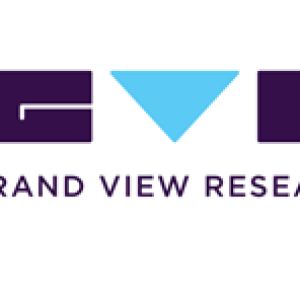Lateral Flow Assays Market To Hit Value .59 Billion By 2030 |Grand View Research, Inc.Posted by Mrudula Anil Karmarkar on March 21st, 2023 The global lateral flow assays market size is expected to reach USD 13.59 billion by 2030, according to a new report by Grand View Research, Inc. The market is anticipated to expand at a CAGR of 3.05% from 2022 to 2030. Major factors driving the growth include the rising prevalence of infectious diseases, growing government initiatives to curb infectious and chronic diseases, rise in demand for point-of-care testing, and increasing strategic mergers & acquisitions among others. Lateral flow assays were developed about half a century ago and have facilitated several diagnostic and testing applications in domains such as healthcare, food & beverage testing, and environmental testing. Similarly, lateral flow assay applications in point-of-care diagnostics are growing and are propelling significant advancements in research for the development of products that evaluate body fluids, such as urine and saliva. The use of these devices promotes self-testing, reduces the need for laboratory testing, and eliminates the need for trained laboratory personnel. Although there have been several technological advancements in laboratory testing in the recent past, several emerging economies still face challenges regarding timely medical intervention. This represents a major factor that is driving the adoption of dipsticks or lateral flow assays for facilitating timely diagnosis and treatment. Due to the increasing utility of lateral flow assays for home use and self-testing, several at-home tests were launched after the pandemic began. For instance, tests such as Abbott’s BinaxNOW COVID-19 Antigen Self-Test, Access Bio’s CareStart COVID-19 Antigen Home Test, Becton, Dickinson and Company’s BD Veritor At-Home COVID-19 Test, and Ellume’s COVID-19 Home Test are commercially available. Government initiatives supporting the use of such tests are expected to enhance the penetration of lateral flow assays and can aid in driving the lateral flow assays market growth. For instance, the Biden-Harris administration has incentivized health plans and insurers for installing a network of locations across the country for providing at-home, over-the-counter COVID-19 tests for free to people with private health coverage. Continuous strategic initiatives undertaken by leading and emerging players to develop and launch advanced products are anticipated to significantly support market growth. For instance, in November 2021, IUL SA launched the iPeak Europium, a new lateral flow reader used to scan fluorescence-labeled lateral flow tests. Similarly, in March 2021, the company introduced its new lateral flow reader, iPeak+. Additionally, in January 2021, Sensyne Health, based in the U.K., introduced an innovative smartphone app-MagnifEye-that employs deep machine learning AI to automate the interpretation of lateral flow diagnostic tests. A rise in mergers and collaborations by market players is anticipated to facilitate access to novel lateral flow technologies. For instance, in February 2022, U.S.-based BD (Becton, Dickinson and Company) and Scanwell Health collaborated to create an at-home rapid test for SARS-CoV-2 using a BD lateral flow antigen test and the Scanwell Health mobile app. The collaboration aims to provide an efficient and scalable rapid antigen home testing solution. To Request Sample Copy of this report, click the link: https://www.grandviewresearch.com/industry-analysis/lateral-flow-assay-market/request/rs1 The use of lateral flow devices also eliminates the need to wait for deciphering test results as well as aids in the optimization of timely treatment decisions, improves the efficacy of care provided, and significantly reduces diagnosis costs, especially in areas with resource-constrained settings and insufficient laboratory infrastructure. The rising trend of decentralized testing has been crucial in increasing the adoption of lateral flow devices globally. The role of these devices has also been observed in controlling major infectious diseases such as malaria and influenza. According to WHO, rapid diagnostic tests are used in diagnosis by healthcare professionals distant from microscopy services; remote diagnosis by professionals in malaria54-endemic countries; and outbreak investigation & survey of parasite prevalence. Thus, various benefits offered by lateral flow devices are among the key factors responsible for increasing the adoption of lateral flow assays globally. Lateral Flow Assays Market Report Highlights
On the other hand, with the advent of advanced technologies, such as PCR and molecular diagnostics, the demand for lateral flow assays may be witnessing sluggish growth to a certain extent. Although lateral flow assays have high specificity and sensitivity, PCR and other molecular diagnostic technologies have emerged to be more sensitive. Furthermore, new product approvals and increasing revenue due to the sales of COVID-19 rapid tests are driving the growth of the industry. As of January 2022, the U.S. FDA had approved at least 12 rapid antigen at-home tests for the detection of COVID-19, with companies such as Abbott Laboratories and Quidel Corporation being among the key players involved. The COVID-19 pandemic has propelled the adoption of lateral flow assays due to a sharp rise in the demand for rapid, point-of-care testing of the deadly disease. As lateral flow assays represent a cost-effective, and easy-to-use testing solution for the mitigation of the COVID-19 outbreak, these assays are expected to witness significant demand for disease surveillance during the pandemic period. Furthermore, international organizations, such as WHO and the European Commission, as well as governments around the world have focused on mass population testing, followed by contact tracing, for curbing the spread of COVID-19. Lateral flow assays have enabled frequent testing and decentralization of healthcare for supporting large-scale testing efforts without the need for complex and extensive infrastructure. List of Key Players in the Lateral Flow Assay Market
Like it? Share it!More by this author |


